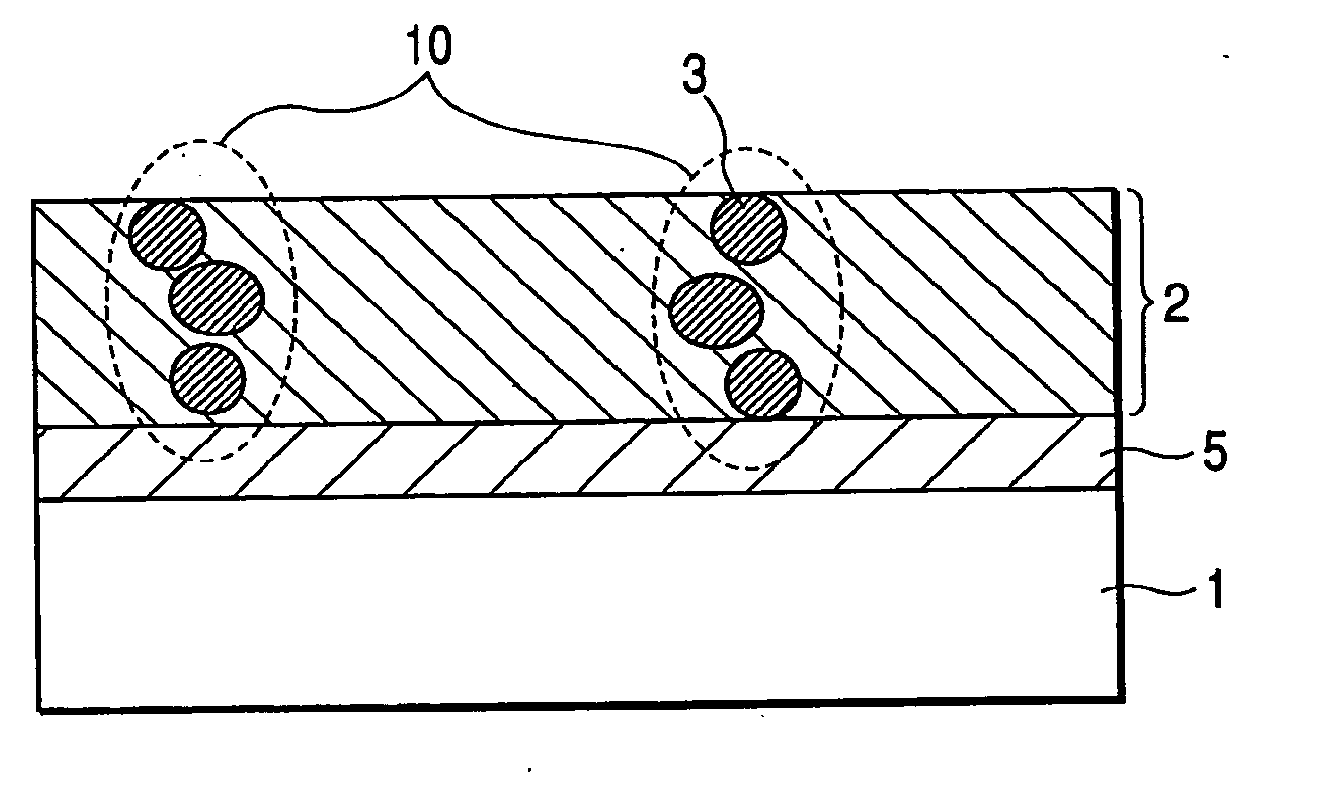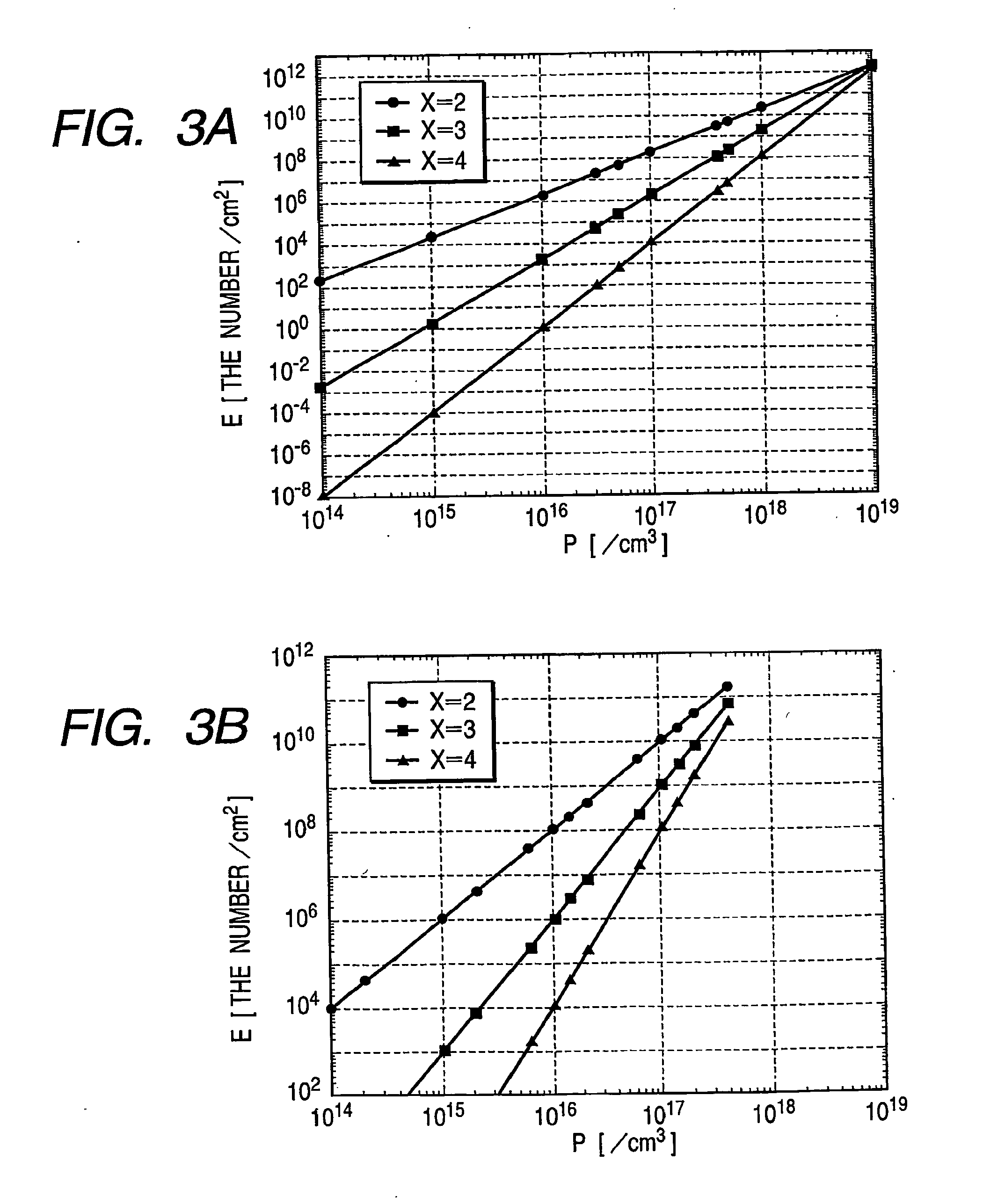Electron-emitting device and manufacturing method thereof
a technology of electron-emitting film and manufacturing method, which is applied in the manufacture of electrode systems, electric discharge tubes/lamps, and screens, etc., can solve the problems that the above-mentioned conventional device using an electron-emitting film cannot always be realized in a state, and achieve high density, high resolution, and high-performance electron sources.
- Summary
- Abstract
- Description
- Claims
- Application Information
AI Technical Summary
Benefits of technology
Problems solved by technology
Method used
Image
Examples
embodiments
[0147] Embodiments of the present invention will be hereinafter described in detail.
first embodiment
[0148] A manufacturing process of an electron-emitting device manufactured according to this embodiment will be described in detail using FIGS. 8A(a) to 8A(c).
[0149] First, quartz was used as a substrate 1 and, after sufficiently cleaning the substrate, a film of Ta with a thickness of 500 nm was formed as a cathode electrode 5 by the sputtering method (FIG. 8A(a)).
[0150] Subsequently, a carbon film 2 with a nickel concentration of 0.02% was deposited to have a thickness of about 12 nm on the cathode electrode 5 by the sputtering method (FIG. 8A(b)). Ar was used as an atmospheric gas. Conditions are as described below: [0151] rf power supply: 13.56 MHz [0152] rf power: 400 W [0153] Gas pressure: 267 mPa [0154] Substrate temperature: 300° C. [0155] Target: Mixed target of graphite and nickel
[0156] Next, the substrate was subjected to heat treatment by lamp heating at 600° C. for 300 minutes in hydrogen containing atmosphere. Then, as shown in FIG. 8A(c), nickel cohered and a plura...
second embodiment
[0159] A manufacturing process of an electron-emitting device manufactured according to this embodiment will be described in detail using FIGS. 8B(a) to 8B(c).
[0160] First, quartz was used as a substrate 1 and, after sufficiently cleaning the substrate, a film of Ta with a thickness of 500 nm was formed as a cathode electrode 5 by the sputtering method (FIG. 8B(a)).
[0161] Subsequently, a carbon film 2 with a cobalt concentration of 0.3% and a hydrogen concentration of 1% was deposited to have a thickness of about 12 nm on the cathode electrode 5 by the sputtering method (FIG. 8B(b)). A mixed gas of Ar and H2 with a mixture ratio of 1:1 was used as an atmospheric gas.
Conditions are as described below:
[0162] rf power supply: 13.56 MHz [0163] graphite rf power: 1 KW [0164] cobalt rf power: 10 W [0165] Gas pressure: 267 mPa [0166] Substrate temperature: 300° C. [0167] Target: Mixed target of graphite and cobalt
[0168] Next, the substrate was subjected to heat treatment by lamp heat...
PUM
| Property | Measurement | Unit |
|---|---|---|
| temperature | aaaaa | aaaaa |
| particle diameter | aaaaa | aaaaa |
| thickness | aaaaa | aaaaa |
Abstract
Description
Claims
Application Information
 Login to View More
Login to View More - R&D
- Intellectual Property
- Life Sciences
- Materials
- Tech Scout
- Unparalleled Data Quality
- Higher Quality Content
- 60% Fewer Hallucinations
Browse by: Latest US Patents, China's latest patents, Technical Efficacy Thesaurus, Application Domain, Technology Topic, Popular Technical Reports.
© 2025 PatSnap. All rights reserved.Legal|Privacy policy|Modern Slavery Act Transparency Statement|Sitemap|About US| Contact US: help@patsnap.com



